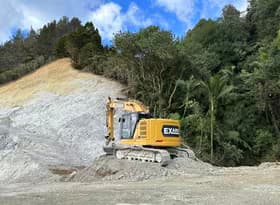
Hey, builders! Why so confident?
Two surveys over the last week have shown rebounding business confidence, despite there being little evidence of an economic recovery any time soon, apart from the start of the easing cycle in interest rates. Along with the improvement in overall confidence, we delve into the figures for the building sector to understand how much we should read into the survey results for future construction activity.
Unbridled optimism is rather surprising
ANZ’s latest Business Outlook, published on Monday, showed a significant improvement in economy-wide business confidence and own-activity expectations, for the third month in a row. Chart 1 shows that, since June, business confidence has jumped 43 points to its highest level since 2014, and it is now a massive 52 points above the long-term average. Own-activity expectations, which are a less volatile and arguably more reliable indicator, are up by 23 points over the last three months. They are now 21 points above the long-term average and at their highest level since 2016 (all figures seasonally adjusted).
The apparent optimism in the figures could reflect the framing of the survey question: for example, “do you expect that general business conditions in 12 months’ time will have improved, remained the same, or deteriorated?” With the economy now 0.7% smaller than it was back in September 2022, things must surely start getting better soon, right?
Lower interest rates would seem to be the most obvious light at the end of the recessionary tunnel. However, the improvement in sentiment in July and August occurred before the Reserve Bank’s cut (most responses to August’s survey came before the Reserve Bank’s Monetary Policy Review and were already showing increased optimism). So unless businesses had more belief than us that the Reserve Bank would cut the official cash rate a year sooner than it had previously indicated, there must also be other factors at play in the confidence lift.
Construction’s confidence rebound led by residential businesses
If the lift in economy-wide sentiment is difficult to fathom, then construction’s confidence rebound is even more surprising. A net 36% of respondent’s to ANZ’s latest survey expected residential construction activity to get better over the next year, compared to a net 2% that expected things to get worse just three months ago (see Chart 2).
Although, for several quarters, we have harboured hopes of a stabilisation in residential consents during the second half of this year, at this stage, the available data up to the end of August is not particularly compelling. Perhaps even more importantly, the backlog of activity that built up during the pandemic, and the natural lags between consents and work put in place, mean that any levelling off in actual residential activity levels would be several months further down the track.
Chart 3 demonstrates the correlation between residential construction expectations and consent numbers since 1991. We have taken the annual average of activity expectations and year-ended growth in consents to reduce the volatility in the two series, but if the relationship holds true, there is a strong indication that consent numbers should stabilise by early next year.
Overall, the relationship between residential construction confidence and consent activity is reasonable, but not startlingly predictive.
Perhaps the biggest cautionary note is that consent numbers have not fallen as much as 2022/23’s confidence collapse would imply – meaning that either the plunge in confidence was overdone, or that downwards pressure on residential consents could persist for longer than the latest confidence numbers suggest.
It’s a similar, albeit less marked, picture for non-residential construction. Net activity expectations have lifted from -16% to +16% since May, and they have historically shown a reasonable correlation with consent volumes. The confidence numbers thus suggest that there could also be relief from the falls in non-residential consents that have occurred since mid-2023 (see Chart 4).
But QSBO figures are still down in the dumps
The NZIER’s Quarterly Survey of Business Opinion, also released this week, paints a quite different picture. In the NZIER’s Survey, there is no split of residential and non-residential construction, but mapping total consent volumes against forward orders for builders over the last three months, or total work put in place against builders’ output over the last three months, points to an industry that is still significantly in contraction. Chart 5 shows that both surveyed indicators improved in the September quarter, but they are still deeply negative.
At this stage, we are putting more store on the less volatile QSBO numbers, but we recognise that ANZ’s figures are more forward-looking (asking about a 12-month horizon rather than just three months). There is logic behind an expected stabilisation in residential consents, given last year’s very strong population growth, declining mortgage rates, steady house prices, and less rampant building cost inflation. Similarly, there are enough major non-residential projects planned in the near-term that mean the consent falls over the last year could moderate throughout the remainder of 2024.
Mounting risks to public building work
It would be remiss not to mention the downside risks associated with government-funded activity. Education building has already come under considerable pressure over the last year, and the news is looking little better for hospital construction, despite the poor state of many hospital buildings around New Zealand. Kainga Ora’s public housing programme has also been paused across the country as the government works to shore up the agency’s financial position and future strategic direction.
We will publish an updated set of building forecasts on 18 October that will take into account the ongoing public sector funding pressures, recent improvements in private sector confidence and investment intentions, and the earlier-than-expected cuts to interest rates by the Reserve Bank.





















